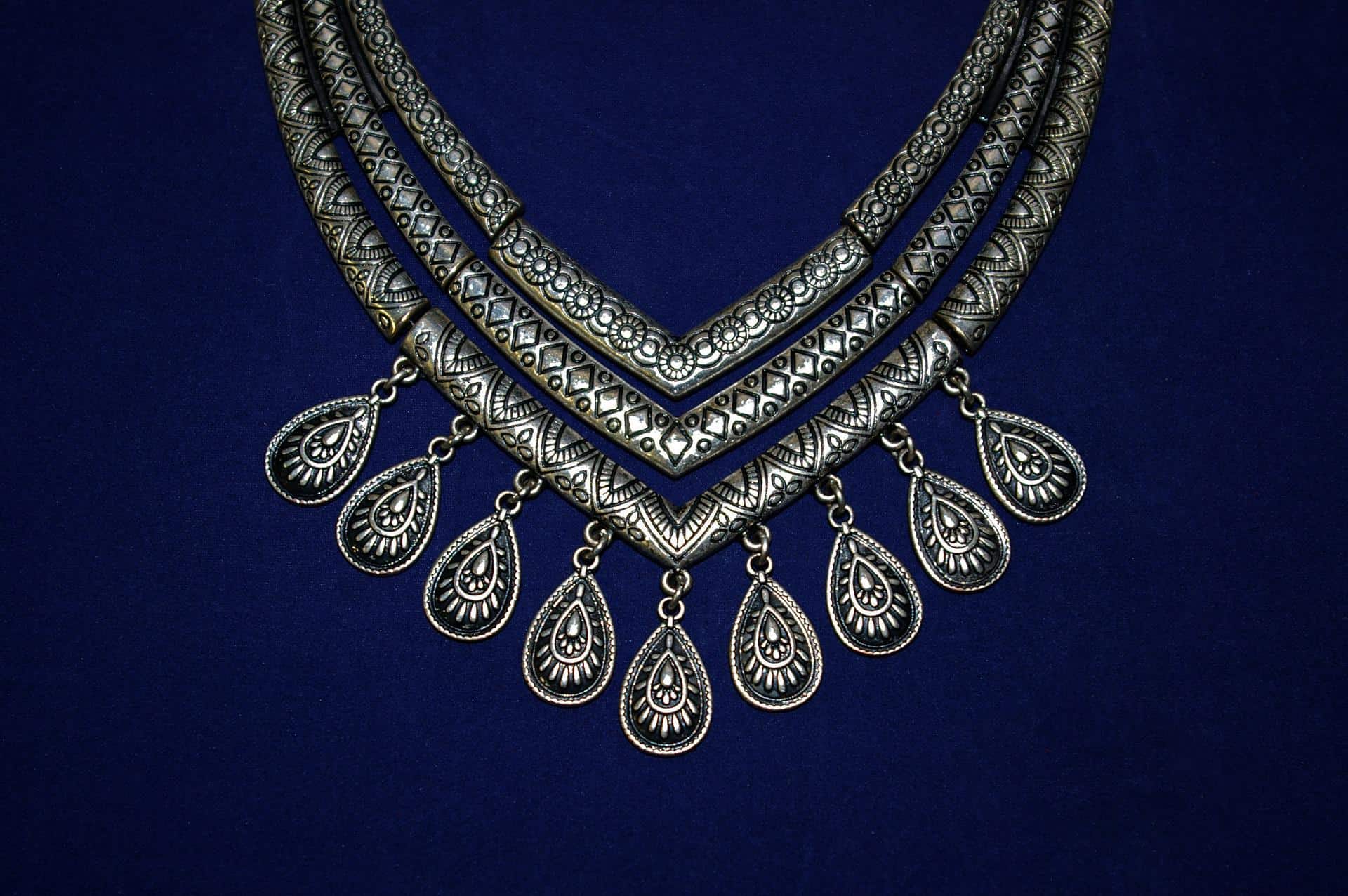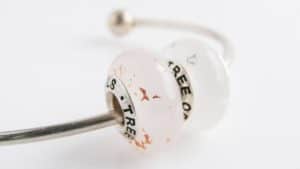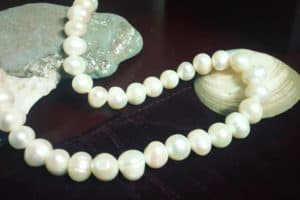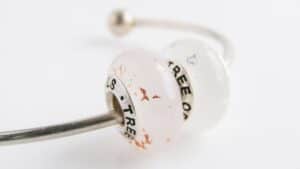While a statement necklace piece may make you the star of the evening, you may also end with a severe rash or worse. This may happen if you don’t pay attention to the kind of metal the jewelry is made from.
A lot of metals are toxic for your health and this is why it is crucial to know all about the metals your jewelry contains. While there are metals like gold, platinum and titanium that are long lasting and skin friendly, there are metals like nickel, cadmium and lead that are not durable and may case irritation to the wearer.
Unfortunately, jewelry with toxic metals is common these days. Industries want to meet the growing demand of the public and at the same time turn heavy profits. Thus, they used cheap, toxic, and easily sourced metals without caring about the detrimental consequences it has on the consumers.
Read more to learn about metals that shouldn’t be used in making jewelry and how to avoid them.
What metals should I avoid in jewelry?
Don’t let dazzle and shine fool you into buying ornaments that are potentially made from harmful metals. Here’s a curated list of metals that you should avoid in jewelry.
- Nickel
- Lead
- Cadmium
- Copper
- Arsenic
- Chromium
- Selenium
- Manganese
- Antimony
- Beryllium
- Mercury
When individually used, these metals can cause significant damage to your skin and health. Moreover, artisans, goldsmiths, and jewelry makers who are exposed to such toxic materials also face numerous problems. Due to safety concerns, the usage of these metals is avoided in many parts of the world. Ask your vendor about the metal composition of the jewelry before buying it to prevent any major consequences.
TOXICITY FROM JEWELRY

Can you get heavy metal poisoning from jewelry?
Yes! While it is certainly not common, it is possible to get heavy metal poisoning from jewelry. Adults and children’s jewelry is known to contain a high amount of toxic substances like plastic and metal. Usually, inexpensive jewelry sold online or in offline stores carries this risk. However, any piece of ornament can be a source of contaminant unless you are aware of the accurate composition of the material.
More than adults, children are at risk of getting heavy metal poisoning because of their natural habit to put jewelry in their mouths. During such physical contact, substances like lead, cadmium, nickel, etc may get ingested. Thus, it can lead to not only metal poisoning but a range of grave conditions like kidney failure, liver problems, and so on in the long run.
Can you get lead poisoning from jewelry?
Yes, one can get lead poisoning from jewelry which can result in death too. Lead is a familiar metal used in jewelry making to brighten colors, make the item heavier, and other similar reasons. However, most people are unaware of the dangers that are involved in using it or wearing it. Most jewelry articles of smaller sizes and minimal prices are known to contain high levels of lead. You can get lead poisoning by inhaling it, ingesting it, or being exposed to it for a long duration. Exposure to lead can lead to a multitude of health problems ranging from learning disabilities to anemia and organ failure. Keeping in mind the side effects of lead, many governments have regulated its usage in jewelry, paints, etc.
What jewelry is toxic?
Any jewelry item can be toxic. This is because the toxicity of a piece of jewelry depends on its constituent metals. An item becomes toxic when it contains harmful chemical substances or a poisonous composition. Jewelry that contains metals like Nickel, Cadmium, Lead and similar metals may have adverse effects on your skin.
However, the toxicity of a piece of jewelry affects different individuals differently. The same piece with the exact same metallic composition will react differently on different skin types.
BAD METALS

Are alloys bad metals for making jewelry?
No, alloys are not bad metals for jewelry making. Precious metals like gold can be too difficult to work with because of their properties. So, they are mixed with other metals like copper and nickel to enhance their ductility and malleability. It also contributes other characteristics like anti-tarnish, anti-corrosion, flexibility, magnetizable, etc. Therefore, alloys have jewelry making considerably simpler and manageable by allowing us to make an extensive range of ornaments in any shape or size. All of these factors make alloys a favorable metal to make jewelry.
Some examples of alloys used to make jewelries are Brass and Sterling Silver.
- Sterling Silver is a mix of silver and copper as a base metal
- Brass is a combination of copper and zinc
Does alloy jewelry turn your skin green?
Yes, alloys can turn your skin green. If a piece will tun you skin green depends on the composition of metals used in making the jewelry.
Skin discoloration is caused due to chemical reaction called oxidation that takes place when certain metals are exposed to your skin.
Metals:
- Copper- Predominantly, copper jewelry articles are known to turn your skin green.
- Brass- since copper comprises about 50% of the entire composition, oxidation will naturally take place. Thus, turning your skin green.
- Sterling Silver contains 8% of copper- which when mixed with extreme circumstances like a sweaty workout session, will cause skin discoloration
Health Risk: Getting green skin will not put into any immediate health risk- it is a common reaction that takes place.
Solution: Jewelry made from alloys that have an additional coating of rhodium will prevent your skin from turning green.
What metal is bad for earrings?
Each body is built differently Thus, it is perplexing to curate a universal list of bad metals for earrings. Therefore, you should know the metals you are allergic to, the primary components of the jewelry piece, and so on- for your safety.
The majority of the population and the governments have declared the below unsafe:
- nickel
- cobalt
Such kinds of pieces are inexpensive costumes or departmental stores earrings. However, traces of nickel and cobalt can also be found in pricey jewelry like gold or silver earrings. Take the necessary precautions to avoid swelling, itchiness, oozing, crusting, etc.
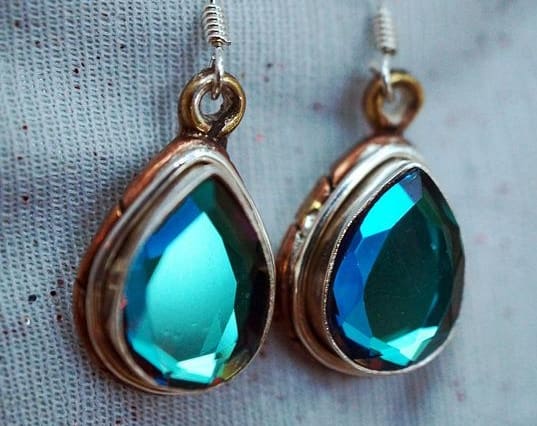
Which metal is most likely to tarnish?
- Copper
- Silver
- Zinc
- Brass
- Bonze
The above are the three metals that are most likely to tarnish faster than other metals. Other metals like silver, aluminum also tarnish over time. But these normally form a protective layer that prevents further oxidation. Some metals are more reactive than others causing them to tarnish rapidly. Also, different metals tarnish differently.
Additionally, environmental factors like humidity also play a significant role in fast-tracking the tarnishing process.
What are some bad metals for jewelry?
The jewelry industry has been notoriously known for using cheaply acquired toxic metals to make ornaments that put their consumers at serious risk. Some of these toxic metals can even endanger the life is the customer. Thanks to the recent awareness spreading across communities, people are uncovering more information about jewelry care tips, precautions to take while buying jewelry, and the effect of using jewelry made from pernicious metals. Thus, it has allowed them to make more conscious decisions while buying commodities like this- and protect their safety and their kids. Keeping that in mind, below are some examples of harmful metals you should avoid
- Cadmium
- Nickel
- Copper
- Lead
- Arsenic
- Mercury
Bad Metals | type of jewelry | range of jewelry | effects caused |
|---|---|---|---|
Nickel | Necklaces, earrings and bracelets | Affordable | redness, blistering and itchy breakouts |
Copper | Necklaces, earrings, anklets and bracelets | Budget-friendly | turns the skin green, breakouts |
Lead | Most jewelry items | inexpensive | behavioral problems, learning disabilities, joint and muscle weakness, Anemia, organ failure, death, fatigue, and tingling in your hands and feet |
Cadmium | Cadmium coating is used all sorts of jewelry to form a shiny coat over it | Cost friendly | Long exposure will result in cancer and endocrine-disrupting effects, absorption or intake will also cause kidney, bone and lung damage |
The jewelry-making industry made an effort to provide safety to their employees who are in direct contact with the metals and their customers by limiting the use of toxic metals. Nonetheless, consumers must be aware of any health hazard they are potentially exposed to. With the help of Govt reinforcements of restricting and limiting the usage of these dangerous metals, we can create a safer environment. Hope this article equips you with all the information you need about toxic metals.

